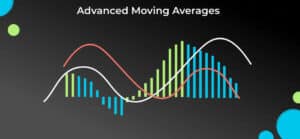The financial markets are a dynamic and ever-changing landscape, influenced by a myriad of economic, political, and social factors. As such, it’s imperative for traders to be adaptable and adjust their strategies to accommodate the prevailing market conditions. This article will delve into the key factors that traders should consider when making these adjustments.
1. Market Sentiment
Market sentiment refers to the overall prevailing attitude of investors toward the market. It can range from bullish (optimistic) to bearish (pessimistic). Understanding market sentiment is crucial because it can significantly impact price movements.
- Bullish Market: In a bullish market, investors are generally optimistic about the future, leading to rising prices. Traders may opt for long positions, aiming to profit from the upward price movement.
- Bearish Market: In a bearish market, investors are pessimistic about the future, leading to falling prices. Traders may opt for short positions, aiming to profit from the downward price movement.
- Neutral Market: In a neutral market, there is no clear bullish or bearish trend. Traders may adopt a more cautious approach, waiting for a clear trend to emerge before making significant trades.
2. Economic Indicators
Economic indicators provide valuable insights into the overall health of the economy. Traders should closely monitor key economic indicators to gauge market sentiment and potential price movements. Some of the most important economic indicators include:
- Gross Domestic Product (GDP): Measures the total value of goods and services produced in an economy. A strong GDP growth rate generally indicates a healthy economy and can lead to rising stock prices.
- Inflation: Measures the rate at which prices increase over time. High inflation can erode purchasing power and lead to interest rate hikes, which can negatively impact the stock market.
- Unemployment Rate: Measures the percentage of the labor force that is unemployed. A low unemployment rate indicates a strong economy and can boost consumer spending, leading to higher stock prices.
- Interest Rates: The cost of borrowing money. Lower interest rates can stimulate economic growth and encourage borrowing, which can be positive for the stock market. Higher interest rates can slow down economic activity and make borrowing more expensive, which can be negative for the stock market.
3. Geopolitical Events
Geopolitical events, such as wars, trade disputes, and political instability, can have a significant impact on financial markets. Traders should be aware of global events and how they may affect their trading strategies. For example, a trade war between two major economies can lead to increased uncertainty and volatility in the market.
4. Corporate News
Company-specific news, such as earnings reports, product launches, and mergers and acquisitions, can also influence stock prices. Traders should stay updated on the latest corporate news and analyze how it may impact the stocks they are trading.
5. Technical Analysis
Technical analysis involves studying past price movements and trading volume to identify patterns and trends that may predict future price movements. Technical indicators, such as moving averages, relative strength index (RSI), and Bollinger Bands, can be used to identify potential buying and selling opportunities.
6. Risk Tolerance
A trader’s risk tolerance is the amount of risk they are willing to accept. It is crucial to adjust your trading strategy based on your risk tolerance. For example, a risk-averse trader may prefer to use stop-loss orders to limit their potential losses, while a more risk-tolerant trader may be willing to take on larger positions.
7. Time Horizon
The time horizon of your trading strategy refers to how long you plan to hold your positions. Short-term traders may focus on intraday or swing trading, while long-term investors may hold positions for several years. The time horizon of your trading strategy will influence the types of indicators and analysis you use.
8. Trading Style
Your trading style refers to your approach to trading. There are several different trading styles, including:
- Day Trading: Buying and selling securities within the same trading day.
- Swing Trading: Holding positions for a few days or weeks.
- Position Trading: Holding positions for several months or years.
- Scalping: Making small profits on many trades.
Your trading style will influence the types of indicators and analysis you use, as well as the time frame of your trades.
9. Market Volatility
Market volatility refers to the degree of price fluctuation in a market. During periods of high volatility, prices can fluctuate rapidly, increasing the risk of losses. Traders should adjust their strategies to account for increased volatility. For example, they may use smaller position sizes or employ stop-loss orders to limit their risk.
10. Market Cycles
Markets often follow cyclical patterns, with periods of growth followed by periods of decline. Understanding market cycles can help traders anticipate potential price movements and adjust their strategies accordingly. For example, during a bull market, traders may be more inclined to take on risk, while during a bear market, they may be more cautious.
By carefully considering these factors, traders can make informed decisions and adjust their strategies to optimize their trading performance in different market conditions.
Let’s Have Forex Trade Copying Service From Expert Traders!
Fx Pips Guru is a forex trade copying service provider company from expert traders. Let’s do Live Chat with our experts.




